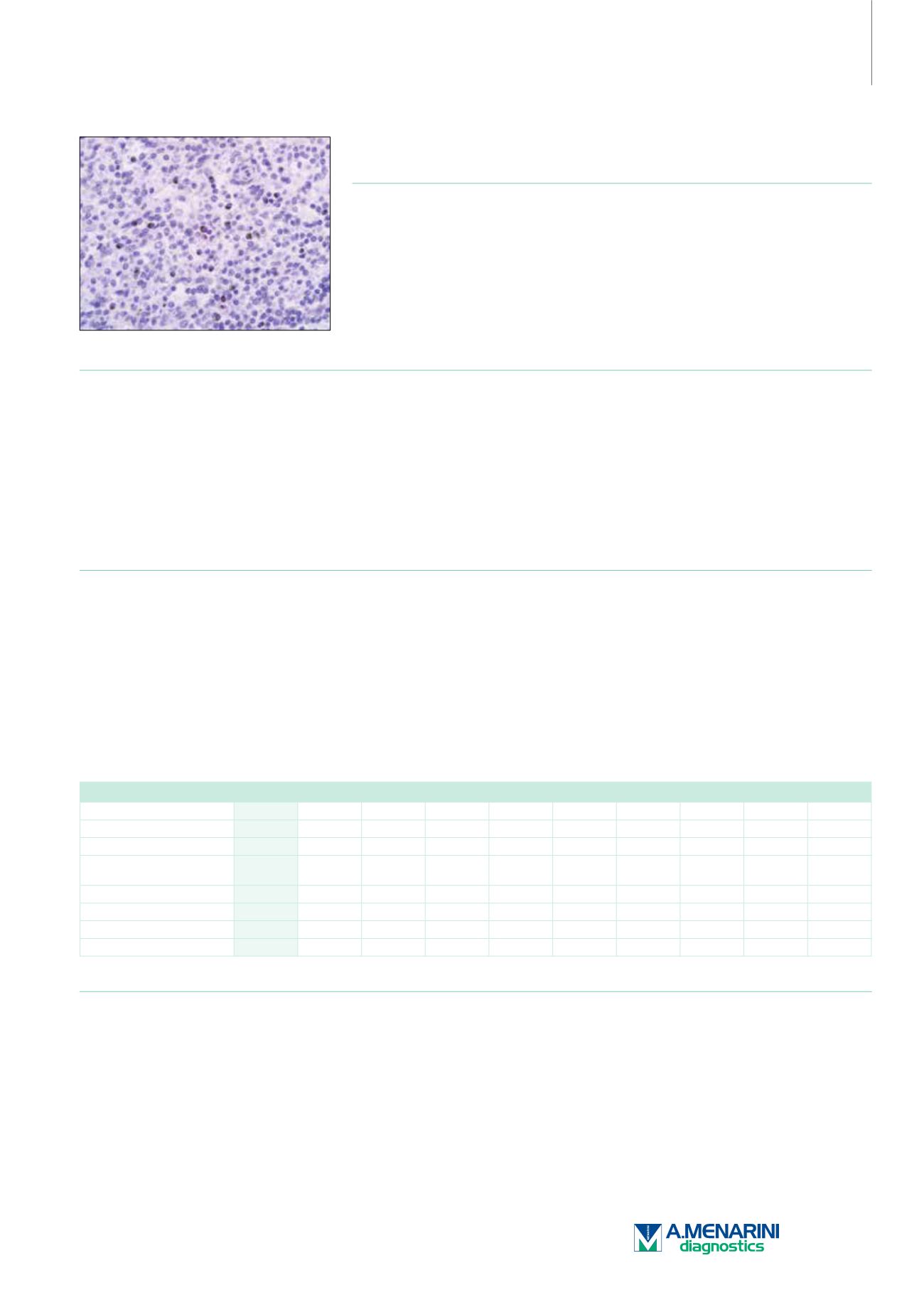
Advanced Solutions
for Advanced Pathology
Perforin (MRQ-23)
Mouse Monoclonal Antibody
Cat. No. Description
Volume
45155 IMPATH Perforin RTU M (MRQ-23)
50 Tests
44369 Perforin RTU M (MRQ-23)
7 ml Ready To Use
44757 Perforin 0,1 M (MRQ-23)
100 µl liquid Concentrated
44758 Perforin 1 M (MRQ-23)
1 ml liquid Concentrated
Product Specifications
Designation
IVD
Reactivity
Paraffin
Visualization
Cytoplasmic
Control
Spleen
Stability
Up to 36 mo. at 2-8°C
Isotype
IgG
1
Manual Protocol*
• Pretreatment: Heat Induced Epitope
Retrieval (HIER)
• Primary Antibody Incubation Time:
10-30min @ 25-37°C
• 2-step polymer detection
*Please refer to product insert for complete protocol.
ImPath Protocol*
• Dewax: Dewax Solution 2 (DS2)
• Pretreatment: Retrieval Solution pH 9.0
(TR1) 32min @ 98-103°C
• Primary Antibody Incubation Time:
10-90min @ 25-37°C
• HRP Polymer (Universal) or AP Polymer
(Universal) for 12 min
*Please refer to product insert for complete protocol.
Product Description
Perforin is a pore-forming protein that leads to osmotic lysis of the target cells and subsequently enables granzymes to enter the target cells and
activate apoptosis, the cell death program. The expression of perforin is upregulated in activated CD8+T-cells, but in NK cells the expression is
constitutively very high and stable. Perforin expression can also be stimulated in some activated CD4+ T-cells.
Although some investigators report a cytolytic potential of CD4+ T-cells, it appears more likely that CD8+ T-cells are the major effector population
in Th1-associated inflammatory skin diseases. The role of perforin-mediated cytotoxicity has been demonstrated in various autoimmune diseases.
In vitro and in vivo studies suggest that the cytotoxicity of CTLs may be mediated by cytotoxic granules in certain inflammatory diseases in
humans. In addition, it seems that T-cell cytotoxicity against keratinocytes is mediated by perforin in some inflammatory skin diseases.
Other authors suggest that perforin may have a dual role in alloimmune response (organ transplant applications). In one regard, it has a cytolytic
function in acute rejection and, in contrast, it may be responsible for downregulating both CD4- and CD8-mediated alloimmune response.
T-cell Lymphomas
Perforin CD2
CD3
CD4
CD5
CD7
CD8
CD25 CD45RO PD-1
Angioimmunoblastic
+
+
+
+
+
-
+
+
+
Lymphoblastic
+/-
+
+/-
+
+
+/-
+
+
-
Subcutaneous
Panniculitis-Like
+
+
+
-
+
+
+/-
-
+
-
NK
+
+
+
-
-
-/+
-
+
+
-
Cutaneous
+
+
+
+
-
+
-
-
-
-/+
Peripheral, NOS
-/+
+
+
+/-
+/-
+/-
-/+
+
+
-
Mycosis Fungoides
-
+
+
+
+
-
-
+
+
-
Reference
1. Chu PG, et al. Ann Diagn Pathol. 1999 Apr; 3(2):104-33. Review.
2. Bittmann I, et al. Virchows Arch. 2004 Oct; 445(4):375-81. Epub 2004 Jul 29.
3. d’Amore ES, et al. Pediatr Dev Pathol. 2007 May-Jun; 10(3):181-91.
199


